Opinion & Analysis
Face the facts in putting: Controlling face angle
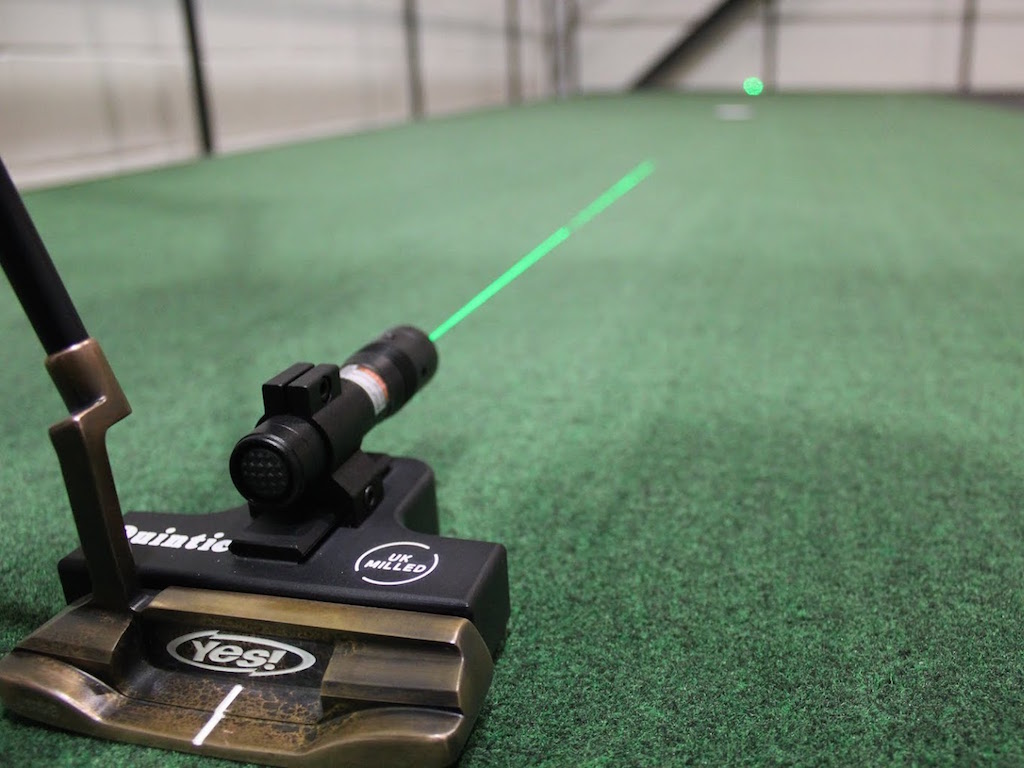
Controlling face angle in putting is a tenacious task. The top players in the world even struggle with this on a daily basis. What about conventional golfers? Can controlling face angle really improve one’s ability to put the ball in the hole?
The short answer is yes, but there are many influencing factors: the style of the putter (face-balanced, plumber-neck, heel-shafted, center-shafted), head weight, posture, alignment, lie and loft, etc. All are factors that can aid a player in controlling face angle, for better or worse!
The purpose of this article is to inform golfers why this is crucial, what to look for when rolling putts and looking for a new putter, and how they can get better.
Note: Through this entire article, we are assuming centered contact with ball and putter head (center mass to center mass). Heel and toe strikes have minimal effect on the direction the ball rolls.
The main purpose of having a square face at impact is to start the ball on your intended start line, but that’s much easier said than done. As the loft on the club gets lower, the more influence face angle has on the direction a ball starts to move or roll. For example, with a 6 iron with a loft of approximately 28 degrees, face angle at impact has a 75 percent effect on the direction the ball launches. The other 25 percent is path. As the loft on the club decreases (i.e. a driver), gear effect aside, face angle has an 85 percent effect. With a putter with a loft of 2 degrees, the influence is greater than 90 percent. This is massive!
A putter face that is open 2 degrees at impact will miss the hole from 5 feet! For a putt to go in at 8 feet, the angle of the face needs to less than 1 degree open or closed to the target. Increase the distance to 15 feet and the putter face needs to less than 0.5 degrees open or closed to the target for the putt to go in. Can you tell the difference between a face angle that is 1-degree closed or open to your target line?
Consider the above statistics. Now consider the PGA Tour average of putts made from inside 5 feet, from 10 feet, and from greater than 10 feet. From the beginning of the 2014/2015 season until now (3.20.2015), here are the best putters from those distances according to PGATour.com.
- Inside 5 feet: Vaughn Taylor — 99.25 percent
- From 10 feet: Jerry Kelly — 71.43 percent
- From greater than 10 feet: John Daly — 22.94 percent
Notice the drop from 10 feet to greater than 10 feet — it’s 48 percent! Remember, a face that is open by 1 degree will miss the hole from 8 feet. This is evidence that face angle outside of 10 feet is unyielding. Outside of 10 feet, most amateur players should focus on getting the proper speed for the putt, but inside 10 feet is where the magic happens. Controlling face angle is what the best players in the world do best.
When selecting a new putter, the style of the putter needs to compliment the style of stroke a player has. That’s why identifying what type of stroke you have is critical.
There are three generalized styles of putting stroke.
- Straight back, straight through: The putter moves in a straight line away from the ball and straight through the ball.
- Minimum Arc: There’s a slight arc to the path of the putter head with minimal face rotation.
- Lots of arc and face rotation: The putter head moves with a noticeable arc and plenty of face rotation.
Golfers who have an arc to their stroke with more face rotation usually prefer or fit into toe-weighted or heel-shafted putters. This gives them more control over face angle at impact.
Golfers with less arc and face rotation generally fit into a plumber’s neck model putter. These putters generally suit strokes with minimal arc and face rotation.
Golfers who like the feel of a “straight-back, straight-through” stroke tend to favor a face-balanced putter. This is a generalized comment, because sometimes different putters feel and perform better to these golfers. Ultimately, the putter should feel comfortable and very natural throughout the stroke. It should also feel very easy to line up to the target.
Checking alignment can be tough to do without a laser or other types of calibrating tools. Typically, most golfers think they are lined up properly, but are not. Using a laser that can sit flush with the putter face is the most accurate way to test this.
Below is an example of how a laser can help identify face angle at address. If your face angle is not square to your target or start line, something would have to change somewhere through the stroke to get the face to square up.
- Face pointed the the right of the target
- Face pointed at the target
- Face pointed to the left of the target
I know some of you are thinking, “What about Billy Mayfair?” Mayfair cut every single putt he made and missed! His face angle was very open at impact during his prime. What he did very well was match his putter’s path to his face angle, so his path, which only has a 10 percent influence, complimented what direction his face was aligned. At Modern Golf, we would never encourage a player to emulate this style of putting. It is too difficult to repeat and adds a ton of cut spin to the roll of the ball. But if a golfer comes to us with this tendency and putts well, there is often no reason for him to change.
One way to work solely of the face angle of your putter at impact is to eliminate path as a variable. Using a putting arc, or a 2×4 piece of wood to run the heel of the putter along to eliminate any path deviation will isolate face angle, but this is only really applicable to short putts. At some point, there should be some arc in a golfer’s stroke.
If you are looking for a quick way to lower your putts on the course, isolate face angle. Work on putts inside 10 feet. These are the ones that have the highest percentage of going in regardless of outside variables. It takes commitment and some extra tools, but it’s one of the quickest way to lower your handicap.
Related
Opinion & Analysis
The 2 primary challenges golf equipment companies face

As the editor-in-chief of this website and an observer of the GolfWRX forums and other online golf equipment discourse for over a decade, I’m pretty well attuned to the grunts and grumbles of a significant portion of the golf equipment purchasing spectrum. And before you accuse me of lording above all in some digital ivory tower, I’d like to offer that I worked at golf courses (public and private) for years prior to picking up my pen, so I’m well-versed in the non-degenerate golf equipment consumers out there. I touched (green)grass (retail)!
Complaints about the ills of and related to the OEMs usually follow some version of: Product cycles are too short for real innovation, tour equipment isn’t the same as retail (which is largely not true, by the way), too much is invested in marketing and not enough in R&D, top staffer X hasn’t even put the new driver in play, so it’s obviously not superior to the previous generation, prices are too high, and on and on.
Without digging into the merits of any of these claims, which I believe are mostly red herrings, I’d like to bring into view of our rangefinder what I believe to be the two primary difficulties golf equipment companies face.
One: As Terry Koehler, back when he was the CEO of Ben Hogan, told me at the time of the Ft Worth irons launch, if you can’t regularly hit the golf ball in a coin-sized area in the middle of the face, there’s not a ton that iron technology can do for you. Now, this is less true now with respect to irons than when he said it, and is less and less true by degrees as the clubs get larger (utilities, fairways, hybrids, drivers), but there remains a great deal of golf equipment truth in that statement. Think about it — which is to say, in TL;DR fashion, get lessons from a qualified instructor who will teach you about the fundamentals of repeatable impact and how the golf swing works, not just offer band-aid fixes. If you can’t repeatably deliver the golf club to the golf ball in something resembling the manner it was designed for, how can you expect to be getting the most out of the club — put another way, the maximum value from your investment?
Similarly, game improvement equipment can only improve your game if you game it. In other words, get fit for the clubs you ought to be playing rather than filling the bag with the ones you wish you could hit or used to be able to hit. Of course, don’t do this if you don’t care about performance and just want to hit a forged blade while playing off an 18 handicap. That’s absolutely fine. There were plenty of members in clubs back in the day playing Hogan Apex or Mizuno MP-32 irons who had no business doing so from a ballstriking standpoint, but they enjoyed their look, feel, and complementary qualities to their Gatsby hats and cashmere sweaters. Do what brings you a measure of joy in this maddening game.
Now, the second issue. This is not a plea for non-conforming equipment; rather, it is a statement of fact. USGA/R&A limits on every facet of golf equipment are detrimental to golf equipment manufacturers. Sure, you know this, but do you think about it as it applies to almost every element of equipment? A 500cc driver would be inherently more forgiving than a 460cc, as one with a COR measurement in excess of 0.83. 50-inch shafts. Box grooves. And on and on.
Would fewer regulations be objectively bad for the game? Would this erode its soul? Fortunately, that’s beside the point of this exercise, which is merely to point out the facts. The fact, in this case, is that equipment restrictions and regulations are the slaughterbench of an abundance of innovation in the golf equipment space. Is this for the best? Well, now I’ve asked the question twice and might as well give a partial response, I guess my answer to that would be, “It depends on what type of golf you’re playing and who you’re playing it with.”
For my part, I don’t mind embarrassing myself with vintage blades and persimmons chasing after the quasi-spiritual elevation of a well-struck shot, but that’s just me. Plenty of folks don’t give a damn if their grooves are conforming. Plenty of folks think the folks in Liberty Corner ought to add a prison to the museum for such offences. And those are just a few of the considerations for the amateur game — which doesn’t get inside the gallery ropes of the pro game…
Different strokes in the game of golf, in my humble opinion.
Anyway, I believe equipment company engineers are genuinely trying to build better equipment year over year. The marketing departments are trying to find ways to make this equipment appeal to the broadest segment of the golf market possible. All of this against (1) the backdrop of — at least for now — firm product cycles. And golfers who, with their ~15 average handicap (men), for the most part, are not striping the golf ball like Tiger in his prime and seem to have less and less time year over year to practice and improve. (2) Regulations that massively restrict what they’re able to do…
That’s the landscape as I see it and the real headwinds for golf equipment companies. No doubt, there’s more I haven’t considered, but I think the previous is a better — and better faith — point of departure when formulating any serious commentary on the golf equipment world than some of the more cynical and conspiratorial takes I hear.
Agree? Disagree? Think I’m worthy of an Adam Hadwin-esque security guard tackle? Let me know in the comments.
@golfoncbs The infamous Adam Hadwin tackle ? #golf #fyp #canada #pgatour #adamhadwin ? Ghibli-style nostalgic waltz – MaSssuguMusic
Podcasts
Fore Love of Golf: Introducing a new club concept

Episode #16 brings us Cliff McKinney. Cliff is the founder of Old Charlie Golf Club, a new club, and concept, to be built in the Florida panhandle. The model is quite interesting and aims to make great, private golf more affordable. We hope you enjoy the show!
Opinion & Analysis
On Scottie Scheffler wondering ‘What’s the point of winning?’

Last week, I came across a reel from BBC Sport on Instagram featuring Scottie Scheffler speaking to the media ahead of The Open at Royal Portrush. In it, he shared that he often wonders what the point is of wanting to win tournaments so badly — especially when he knows, deep down, that it doesn’t lead to a truly fulfilling life.
View this post on Instagram
“Is it great to be able to win tournaments and to accomplish the things I have in the game of golf? Yeah, it brings tears to my eyes just to think about it because I’ve literally worked my entire life to be good at this sport,” Scheffler said. “To have that kind of sense of accomplishment, I think, is a pretty cool feeling. To get to live out your dreams is very special, but at the end of the day, I’m not out here to inspire the next generation of golfers. I’m not out here to inspire someone to be the best player in the world, because what’s the point?”
Ironically — or perhaps perfectly — he went on to win the claret jug.
That question — what’s the point of winning? — cuts straight to the heart of the human journey.
As someone who’s spent over two decades in the trenches of professional golf, and in deep study of the mental, emotional, and spiritual dimensions of the game, I see Scottie’s inner conflict as a sign of soul evolution in motion.
I came to golf late. I wasn’t a junior standout or college All-American. At 27, I left a steady corporate job to see if I could be on the PGA Tour starting as a 14-handicap, average-length hitter. Over the years, my journey has been defined less by trophies and more by the relentless effort to navigate the deeply inequitable and gated system of professional golf — an effort that ultimately turned inward and helped me evolve as both a golfer and a person.
One perspective that helped me make sense of this inner dissonance around competition and our culture’s tendency to overvalue winning is the idea of soul evolution.
The University of Virginia’s Division of Perceptual Studies has done extensive research on reincarnation, and Netflix’s Surviving Death (Episode 6) explores the topic, too. Whether you take it literally or metaphorically, the idea that we’re on a long arc of growth — from beginner to sage elder — offers a profound perspective.
If you accept the premise literally, then terms like “young soul” and “old soul” start to hold meaning. However, even if we set the word “soul” aside, it’s easy to see that different levels of life experience produce different worldviews.
Newer souls — or people in earlier stages of their development — may be curious and kind but still lack discernment or depth. There is a naivety, and they don’t yet question as deeply, tending to see things in black and white, partly because certainty feels safer than confronting the unknown.
As we gain more experience, we begin to experiment. We test limits. We chase extreme external goals — sometimes at the expense of health, relationships, or inner peace — still operating from hunger, ambition, and the fragility of the ego.
It’s a necessary stage, but often a turbulent and unfulfilling one.
David Duval fell off the map after reaching World No. 1. Bubba Watson had his own “Is this it?” moment with his caddie, Ted Scott, after winning the Masters.
In Aaron Rodgers: Enigma, reflecting on his 2011 Super Bowl win, Rodgers said:
“Now I’ve accomplished the only thing that I really, really wanted to do in my life. Now what? I was like, ‘Did I aim at the wrong thing? Did I spend too much time thinking about stuff that ultimately doesn’t give you true happiness?’”
Jim Carrey once said, “I think everybody should get rich and famous and do everything they ever dreamed of so they can see that it’s not the answer.”
Eventually, though, something shifts.
We begin to see in shades of gray. Winning, dominating, accumulating—these pursuits lose their shine. The rewards feel more fleeting. Living in a constant state of fight-or-flight makes us feel alive, yes, but not happy and joyful.
Compassion begins to replace ambition. Love, presence, and gratitude become more fulfilling than status, profits, or trophies. We crave balance over burnout. Collaboration over competition. Meaning over metrics.
Interestingly, if we zoom out, we can apply this same model to nations and cultures. Countries, like people, have a collective “soul stage” made up of the individuals within them.
Take the United States, for example. I’d place it as a mid-level soul: highly competitive and deeply driven, but still learning emotional maturity. Still uncomfortable with nuance. Still believing that more is always better. Despite its global wins, the U.S. currently ranks just 23rd in happiness (as of 2025). You might liken it to a gifted teenager—bold, eager, and ambitious, but angsty and still figuring out how to live well and in balance. As much as a parent wants to protect their child, sometimes the child has to make their own mistakes to truly grow.
So when Scottie Scheffler wonders what the point of winning is, I don’t see someone losing strength.
I see someone evolving.
He’s beginning to look beyond the leaderboard. Beyond metrics of success that carry a lower vibration. And yet, in a poetic twist, Scheffler did go on to win The Open. But that only reinforces the point: even at the pinnacle, the question remains. And if more of us in the golf and sports world — and in U.S. culture at large — started asking similar questions, we might discover that the more meaningful trophy isn’t about accumulating or beating others at all costs.
It’s about awakening and evolving to something more than winning could ever promise.


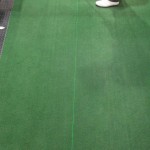
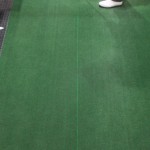
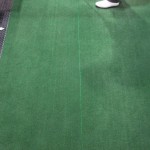
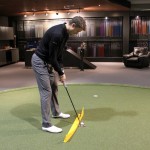
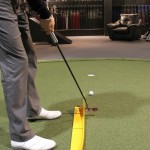









Pingback: How to Improve Your Putting
Samual Puttington
Apr 1, 2015 at 6:35 pm
HEY MODERN GOLF, what are the stats for people returning the face at impact to what they had at address? Pretty low, right? So then why so concerned with adjusting the address position to have a face pointed directly at the target when very few will return the putter face to that angle? Fir for stroke. Edel has it wrong.
Modern Golf Staff
Apr 2, 2015 at 7:08 pm
It’s all about creating consistency. It’s important to see where the alignment issue is (aligned left or right of target) and getting the player to feel and see the difference. If we can create a more consistent face angle at impact the player will develop more feel for distance and line.
AJ Jensen
Apr 1, 2015 at 4:22 pm
Good article for sure. The main takeaway for me though is the idea that my driver is more sensitive to face angle than are the weaker clubs. This explains all the times I’ve KNOWN my driver’s swing path was correct at-and-after ball impact, yet my shot quickly took off on a lateral arc to the left or right
lef
Apr 1, 2015 at 11:27 am
Lie angle is critical in the discussion and not brought up here. The amount of arc in the putting stroke is strong dictated by lie angle. When you set a putter down flat it tells you its natural arc. This is why It’s virtually impossible to truly putt straight back and straight through because putters don’t have a zero degree lie angle. I’ve been playing a face balanced centershafted putter for a decade with a moderately arcing stroke due to its lie. When I use a heal shafted toe heavy putter with the same lie angle and shaft length and weight I feel almost no difference. But if I use any style of putter with a different lie angle I immediately adopt the natural arc of that putter. If you want to feel the face closing find a putter with a longish shaft and a shallow lie. Its a much stronger effect than toe weight in my opinion.
Brutus
Apr 1, 2015 at 11:25 am
It has been shown that without a doubt a putter path cannot move straight back and thru without the handle moving back linearly and maintaining it’s exact relative location to the head (i.e. hovering right over it as it slides back, speed of movement, etc…) Any variance between the 2 immediately introduces 2 arcs on 2 planes. Arc 1 as it lifts up the lowest point to the ground at address while swinging back. Even if it comes up a 1/2″, that’s an arc. And arc 2 as it swings inside (or outside) a straight path back. This is created as the putter head moves farther and faster than the handle and has to arc in the process. An analysis of Nicklaus’ stroke as he used to hunch way over and piston like pump his putt was close to straight back and through but still produced those 2 arcs inevitably.
I bought that yellow swing path trainer your set of pictures show. It’s from Butch Harmon who developed Tiger into a putting force using this method in the early 2000’s. (See putting tips from Jim Flick and Butch in Golf Digest articles from 9/09 and 5/13 issues as they describe the Inside and Down the Line technique Butch teaches and this aid develops). I rarely think a new training device will give me 10% more driving distance or whatever, but I know practicing with this increased me putting from inside 10 feet to the tune of 3 to 4 less putts a round. I saw it in my scores and handicap improvement.
Phil
Mar 31, 2015 at 5:02 pm
I am a heavily left eye dominant, right handed golfer. I constantly fight aiming too far right of target as my eyes are telling me I am aiming too far left. This results in me A trusting it and putting a good stroke on or B pushing the putt cos after the back swing my brain forces me to push the ball where my eyes think it should be going. I have been trying to use a ping ketsch with slight arc but am continually missing right. A return to my yes Morgan (Napa) type blade fixes this but I really want the ketsch to work as so much more forgiving…
Mike
Apr 1, 2015 at 12:37 pm
Try a putter with less offset (center shafted to 1/2). If you are like me (left eye dominate playing right handed golf), I aim better with a center shafted or at most a 1/2 offset putter. When I grab a 3/4 to full offset putter I aim too far to the left of target.
talljohn777
Apr 1, 2015 at 1:38 pm
I have had the same issue. Put a line on your ball, get behind your intended line and using both your eyes binocularly place the ball on your intended line with the line on the ball matching up with your intended line of putt, then step into your putt with the putter lining up with the line on your ball, now your putter is correctly aimed on your intended line, stroke the ball, make the putt.
Rick Wright
Mar 31, 2015 at 4:40 pm
LASER OPTICS is actually the original putter alignment laser. My patented technology (US only) has been around for over 15 years. In 2013, I upgraded to a high power green laser, which can be seen prominently outdoors. I further changed the design allowing for the instructor/user to trace the aim line on the putting surface. This change allows assessment of alignment on straight or breaking putts from any length. Hurrion approached me at the 2014 PGA Show with the desire to have me develop an alignment laser specifically for the Quintic Ball Roll System. After prototypes were provided I never heard from him again. Although, I see he didn’t bother to change the shape of the laser base. Oh well, that’s the golf industry for you.
M
Mar 31, 2015 at 3:02 pm
Modern Golf – What if you have natural aiming tendencies due to eye dominance, etc? Wouldn’t changing a person to aim directly at the hole (if they are slightly off) cause their eyes and proprioception to send conflicting messages? How many professional golfers actual aim within the hole at 10 feet or more?
Modern Golf Staff
Apr 2, 2015 at 6:52 pm
This is not a what if, everyone has a dominant eye and tendencies due to this. The key is to find a putter that is easier to line up. Right eye dominant players have an easier time lining up putters with left offset. Also, they tend to have an open stance to their target to see the line better. using a laser will help identify what direction the alignment is off.
Golf professionals struggle with this as well. They are human! The difference is they know their tendencies and have a good feel for alignment. outside of 10 feet the best putters in the world are making just over 20% of their putts.
Paul
Mar 31, 2015 at 12:56 pm
I use a plumbers neck ping anser style putter. I have a slight arc.
I often feel like I have to grip the putter firmly to stop the face closing over, which produces pulls if I leave it to go. Should I be using a face balanced putter?
M
Mar 31, 2015 at 2:59 pm
No you should be using a putter with more arc to allow the face to open more on the backswing. Then you won’t feel like you have to stop the putter from releasing.
Try a Shea H or a Zing and see if it feels like you can release the putter more freely.
Rick Wright
Mar 31, 2015 at 5:43 pm
A putter does not create arc, the golfer does. With a couple of friends/colleagues I have developed the math which will plot an individual’s signature path based upon set up, posture, and relationship to ball position. If the golfer’s path does not match the projected path (usually due to preconceived notions), there is manipulation. The brain can typically manage small degrees of manipulation, but greater degrees can result in accuracy, impact, and ultimately, distance control issues.
talljohn777
Apr 1, 2015 at 1:43 pm
And why are you not sharing the information with the rest of the golf world???
Tiger Hoods
Apr 1, 2015 at 6:37 pm
Every putter has a rotational value that is engineered into the design. If that value doesn’t fit the rotational requirement of the golfer the golfer will feel off. I learned that from a great instructor at puttertalk.com
Modern Golf Staff
Apr 2, 2015 at 6:25 pm
Interesting Rick! We would love to chat more regarding the applied math. Maybe this is something we can implement here at Modern Golf.
Stretch
Apr 4, 2015 at 11:17 am
Nicely stated Rick. The manipulation is what leads to yippy strokes. The root cause of the manipulation is having the eyes aligned differently to the intended line the ball needs to roll on.